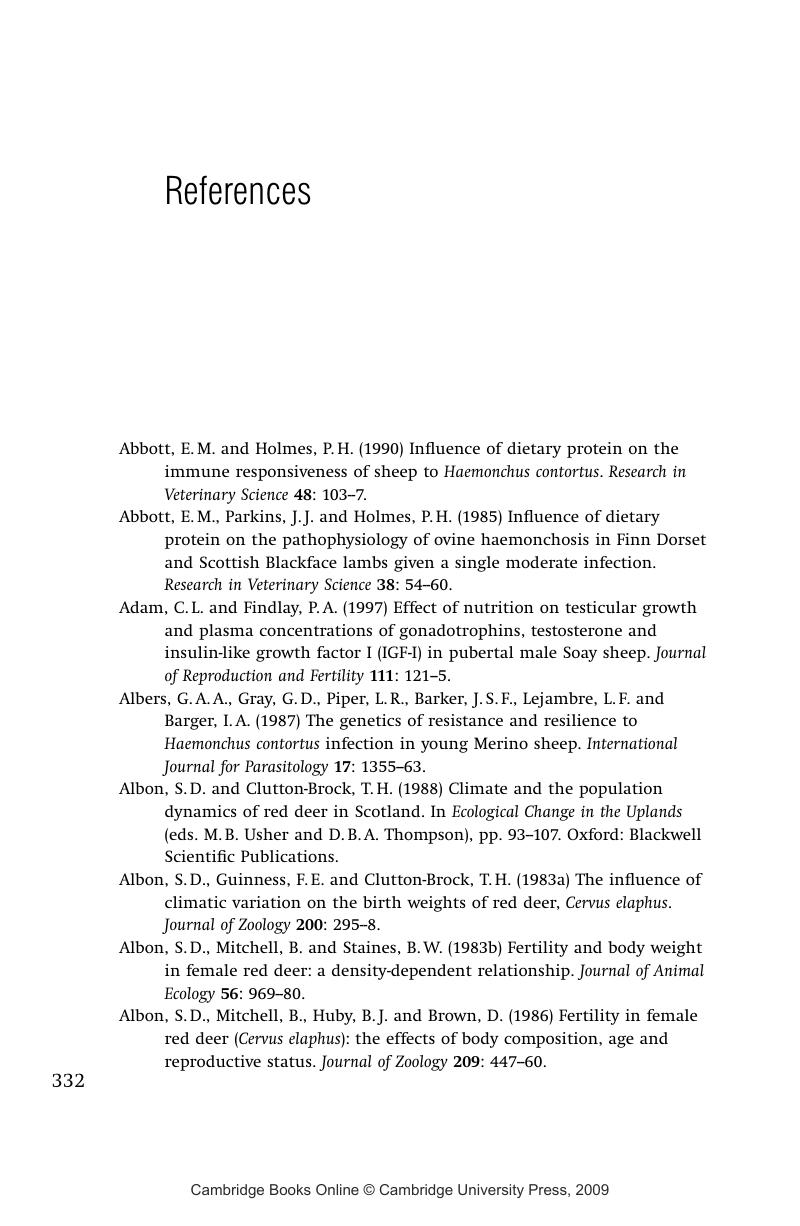Book contents
- Frontmatter
- Contents
- List of contributors
- Editors' and Authors' Acknowledgements
- 1 Individuals and populations
- 2 The sheep of St Kilda
- 3 Population dynamics in Soay sheep
- 4 Vegetation and sheep population dynamics
- 5 Parasites and their impact
- 6 Mating patterns and male breeding success
- 7 Selection on phenotype
- 8 Molecular genetic variation and selection on genotype
- 9 Adaptive reproductive strategies
- 10 The causes and consequences of instability
- Appendix 1 The flora of St Kilda
- Appendix 2 Inheritance of coat colour and horn type in Hirta Soay sheep
- Appendix 3 How average life tables can mislead
- References
- Index
- Plate section
- References
References
Published online by Cambridge University Press: 07 December 2009
- Frontmatter
- Contents
- List of contributors
- Editors' and Authors' Acknowledgements
- 1 Individuals and populations
- 2 The sheep of St Kilda
- 3 Population dynamics in Soay sheep
- 4 Vegetation and sheep population dynamics
- 5 Parasites and their impact
- 6 Mating patterns and male breeding success
- 7 Selection on phenotype
- 8 Molecular genetic variation and selection on genotype
- 9 Adaptive reproductive strategies
- 10 The causes and consequences of instability
- Appendix 1 The flora of St Kilda
- Appendix 2 Inheritance of coat colour and horn type in Hirta Soay sheep
- Appendix 3 How average life tables can mislead
- References
- Index
- Plate section
- References
Summary

- Type
- Chapter
- Information
- Soay SheepDynamics and Selection in an Island Population, pp. 332 - 379Publisher: Cambridge University PressPrint publication year: 2003



